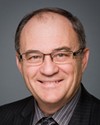There are a number of things that should have happened before we ever got to this point, and they certainly need to happen now.
One is that there needs to be a land use planning process led by the Matawa first nations, resulting in a land use plan and a land use strategy, including an industrial, developmental, and economic strategy, for that region—which is owned by the Matawa first nations and the people who are resident in that area.
The second thing that needs to happen is we need to have a very considered approach to how the projects in that area are going to be evaluated, how they're going to be assessed for social, economic, and environmental benefits, as well as dis-benefits, and particularly cumulative effects.
We have the Minister of Northern Development and Mines identifying 35 sets, major players in the area. There are 10 major projects identified to date. There are comprehensive studies announced for two of those, one by one of the major players, Cliffs Natural Resources, and the other by the other major player, Noront.
They are both moving forward right now with very limited studies; basically it's an exchange of papers. It's a very limited review. It doesn't allow the testing and the examination of the proposal in the way a panel review would, a review with a hearing, and there are some pretty obvious problems with this. Noront is proposing an east-west transportation route out. Cliffs is proposing a north-south. We have remote area that could then be accessed by two different transportation corridors, which will have even more significant impacts in terms of community, environment, wildlife populations, and so on.
We really need an integrated approach, a planning approach, and an environmental assessment is—when done well—a planning tool. For it to be done well, we need an integrated environmental assessment that looks at all of the projects over time, and looks at all of the consequences of these projects.




